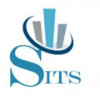Filter interviews by
Nexpro Systems L2 Support System Administrator Interview Questions and Answers
9 Interview questions
OSI and TCP/IP models are both used to describe how data is transmitted over a network.
OSI has 7 layers while TCP/IP has 4 layers
OSI is a theoretical model while TCP/IP is a practical model
OSI is a top-down approach while TCP/IP is a bottom-up approach
OSI is more complex and comprehensive than TCP/IP
TCP/IP is the most widely used model in practice
OSI model is a conceptual model that describes how data is transmitted over a network.
OSI stands for Open Systems Interconnection.
It has 7 layers: Physical, Data Link, Network, Transport, Session, Presentation, and Application.
Each layer has a specific function and communicates with adjacent layers.
Example: HTTP operates at the Application layer, while TCP operates at the Transport layer.
The model helps in trouble...
Tickets priority can be categorized based on impact and urgency.
Impact refers to the extent of damage or disruption caused by the issue.
Urgency refers to the time frame within which the issue needs to be resolved.
Priority levels can be high, medium, or low based on the combination of impact and urgency.
For example, a critical system outage would have high impact and high urgency, while a minor bug would have low i...
Ticketing is a process of logging, tracking, and resolving customer issues or requests.
Ticketing systems are used to manage customer support requests.
Each request is assigned a unique ticket number for tracking purposes.
Tickets can be prioritized based on severity and assigned to appropriate teams or individuals.
Ticketing systems allow for communication between customers and support teams.
Examples of ticketing sys...
Networks refer to the interconnection of devices and systems to facilitate communication and data exchange.
Networks allow devices to communicate and share resources
They can be wired or wireless
Examples include LAN, WAN, and the internet
Networks can be secured using firewalls and other security measures
Active Directory is a Microsoft service that manages network resources and user accounts.
It provides centralized authentication and authorization for Windows-based computers.
It allows administrators to manage users, computers, and other network resources from a single location.
It uses a hierarchical structure of domains, trees, and forests to organize network resources.
It supports group policies, which allow admin...
Group Policy is a feature in Windows that allows administrators to manage user and computer settings centrally.
Group Policy is used to enforce security policies, software installation policies, and other settings across a network.
It can be used to restrict access to certain features or applications, set password policies, and configure network settings.
Group Policy settings are stored in Group Policy Objects (GPOs...
SLA stands for Service Level Agreement and TAT stands for Turnaround Time.
SLA is a contract between a service provider and a customer that outlines the level of service expected.
TAT is the amount of time it takes to complete a task or resolve an issue.
Both SLA and TAT are important metrics in measuring the quality of service provided.
For example, an SLA may guarantee a response time of 24 hours and a TAT of 48 hou...
DNS stands for Domain Name System. It is a system that translates domain names into IP addresses.
DNS is like a phonebook for the internet
It maps domain names to IP addresses
DNS servers store this information and respond to requests for domain name resolution
DNS uses a hierarchical structure with top-level domains like .com, .org, .net, etc.
DNS resolution can be recursive or iterative
DNS caching helps to speed up t...
Nexpro Systems L2 Support System Administrator Interview Experiences
1 interview found
I applied via Approached by Company and was interviewed in Jun 2022. There were 5 interview rounds.

(4 Questions)
- Q1. Tell me about yourself?
- Q2. Work Experiance Details.
- Q3. Why are you applying for this job?
- Q4. Are you willing to invest at least 2-3 years in this job role or not?
(4 Questions)
- Q1. What do you know about OSI model?
- Ans.
OSI model is a conceptual model that describes how data is transmitted over a network.
OSI stands for Open Systems Interconnection.
It has 7 layers: Physical, Data Link, Network, Transport, Session, Presentation, and Application.
Each layer has a specific function and communicates with adjacent layers.
Example: HTTP operates at the Application layer, while TCP operates at the Transport layer.
The model helps in troubleshoot...
- Q2. Comparison between OSI and TCP/IP Model.
- Ans.
OSI and TCP/IP models are both used to describe how data is transmitted over a network.
OSI has 7 layers while TCP/IP has 4 layers
OSI is a theoretical model while TCP/IP is a practical model
OSI is a top-down approach while TCP/IP is a bottom-up approach
OSI is more complex and comprehensive than TCP/IP
TCP/IP is the most widely used model in practice
- Q3. What is DNS, how does it work?
- Ans.
DNS stands for Domain Name System. It is a system that translates domain names into IP addresses.
DNS is like a phonebook for the internet
It maps domain names to IP addresses
DNS servers store this information and respond to requests for domain name resolution
DNS uses a hierarchical structure with top-level domains like .com, .org, .net, etc.
DNS resolution can be recursive or iterative
DNS caching helps to speed up the re...
- Q4. What do you understand by Networks?
- Ans.
Networks refer to the interconnection of devices and systems to facilitate communication and data exchange.
Networks allow devices to communicate and share resources
They can be wired or wireless
Examples include LAN, WAN, and the internet
Networks can be secured using firewalls and other security measures
(5 Questions)
- Q1. What is Active Directory?
- Ans.
Active Directory is a Microsoft service that manages network resources and user accounts.
It provides centralized authentication and authorization for Windows-based computers.
It allows administrators to manage users, computers, and other network resources from a single location.
It uses a hierarchical structure of domains, trees, and forests to organize network resources.
It supports group policies, which allow administra...
- Q2. What is Group Policy?
- Ans.
Group Policy is a feature in Windows that allows administrators to manage user and computer settings centrally.
Group Policy is used to enforce security policies, software installation policies, and other settings across a network.
It can be used to restrict access to certain features or applications, set password policies, and configure network settings.
Group Policy settings are stored in Group Policy Objects (GPOs) whi...
- Q3. What do you understand by Ticketing?
- Ans.
Ticketing is a process of logging, tracking, and resolving customer issues or requests.
Ticketing systems are used to manage customer support requests.
Each request is assigned a unique ticket number for tracking purposes.
Tickets can be prioritized based on severity and assigned to appropriate teams or individuals.
Ticketing systems allow for communication between customers and support teams.
Examples of ticketing systems ...
- Q4. How will you catagorize tickets priority?
- Ans.
Tickets priority can be categorized based on impact and urgency.
Impact refers to the extent of damage or disruption caused by the issue.
Urgency refers to the time frame within which the issue needs to be resolved.
Priority levels can be high, medium, or low based on the combination of impact and urgency.
For example, a critical system outage would have high impact and high urgency, while a minor bug would have low impact...
- Q5. What is SLA? and TAT?
- Ans.
SLA stands for Service Level Agreement and TAT stands for Turnaround Time.
SLA is a contract between a service provider and a customer that outlines the level of service expected.
TAT is the amount of time it takes to complete a task or resolve an issue.
Both SLA and TAT are important metrics in measuring the quality of service provided.
For example, an SLA may guarantee a response time of 24 hours and a TAT of 48 hours fo...
(3 Questions)
- Q1. What is your current CTC?
- Q2. What's your Expected CTC?
- Q3. Are you serving any Notice Period?
Interview Preparation Tips
- Networking
- System Administration
- Active Directory
- Ticketing
- Desktop Support
- IT Hardware
Skills evaluated in this interview
Top trending discussions






Interview questions from similar companies

Senior Software Engineer Interview Questions & Answers
Harjai Computersposted on 6 Dec 2019
I applied via Naukri.com and was interviewed in Jun 2019. There were 6 interview rounds.
Interview Questionnaire
2 Questions
- Q1. Software manual testing related questions..retesting, regression testing, types of testing, domain
- Q2. Stlc, sdlc, retesting, regression testing, Writing test cases
Interview Preparation Tips

I applied via Naukri.com and was interviewed in Feb 2022. There were 2 interview rounds.
Good test soo check
Failed in this round
Interview Preparation Tips

Software Engineer Interview Questions & Answers
Harjai Computersposted on 6 Jan 2025
(1 Question)
- Q1. Insurance based


(3 Questions)
- Q1. LMS LOS CMS life cycle
- Q2. What is loan life cycle
- Ans.
Loan life cycle refers to the stages involved in the processing and management of a loan.
The loan life cycle includes origination, underwriting, funding, servicing, and collection.
Origination involves the application and approval process.
Underwriting involves assessing the borrower's creditworthiness and determining the terms of the loan.
Funding involves disbursing the loan amount to the borrower.
Servicing involves man...
- Q3. What is software life cycle
Interview Preparation Tips
Skills evaluated in this interview

Desktop Support Engineer Interview Questions & Answers
Harjai Computersposted on 7 Nov 2019
I appeared for an interview in May 2019.
Interview Questionnaire
1 Question
- Q1. Tell me about yourself
- Ans.
I am a dedicated Desktop Support Engineer with a passion for solving technical issues and enhancing user experiences.
Over 5 years of experience in desktop support, troubleshooting hardware and software issues.
Proficient in Windows and Mac OS environments, having resolved over 1000 support tickets.
Skilled in remote support tools like TeamViewer and Remote Desktop, ensuring quick resolutions.
Strong communication skills, ...
Interview Preparation Tips

I applied via Naukri.com and was interviewed in Apr 2023. There were 2 interview rounds.
(3 Questions)
- Q1. Oops concepts, mvc related questions
- Q2. Store procedure, function,
- Q3. Asked SQL query scenario based questions
(1 Question)
- Q1. Oops , SQL and mvc questions. Mostly question was scenario based

I applied via Naukri.com and was interviewed before Aug 2023. There was 1 interview round.
(1 Question)
- Q1. All the MVC technical basics in dot net?
- Ans.
MVC in .NET is a design pattern that separates application logic into three interconnected components: Model, View, and Controller.
Model: Represents the data and business logic. Example: A class that interacts with a database.
View: The user interface that displays data. Example: Razor views in ASP.NET MVC.
Controller: Handles user input and interacts with the model. Example: A controller action method that processes for...

Experience level codes ask.
(2 Questions)
- Q1. I don't remember at this time question.but question was experience level 3+ yrs level rounds and java,Mysql, spring boot mostly question.
- Q2. I didn't remember question but all questions are Java related .
Interview Preparation Tips

I applied via Referral and was interviewed before Dec 2020. There was 1 interview round.
Interview Questionnaire
2 Questions
- Q1. Java, Spark Concepts
- Q2. Threading with example
- Ans.
Threading is a way to execute multiple tasks concurrently in a single program.
Threading allows for parallel execution of code
Threads share the same memory space
Example: running a background task while the main program continues to run
Interview Preparation Tips
Nexpro Systems Interview FAQs
Tell us how to improve this page.
Interview Questions for Popular Designations
- Software Engineer Interview Questions
- Senior Software Engineer Interview Questions
- System Engineer Interview Questions
- Senior Associate Interview Questions
- Desktop Support Engineer Interview Questions
- System Administrator Interview Questions
- Senior Systems Engineer Interview Questions
- Linux Administrator Interview Questions
- Show more
Overall Interview Experience Rating
based on 1 interview experience
Difficulty level
Duration
Interview Questions from Similar Companies
|
Service Engineer
7
salaries
| ₹2.4 L/yr - ₹5.4 L/yr |
|
Field Service Engineer
6
salaries
| ₹4 L/yr - ₹4.8 L/yr |
|
Engineer
4
salaries
| ₹5.1 L/yr - ₹6.2 L/yr |
|
Solution Consultant
3
salaries
| ₹15 L/yr - ₹15 L/yr |
|
Network Consultant
3
salaries
| ₹6 L/yr - ₹11 L/yr |

Bonace Engineers

US Tech Solutions

New Opportunity Consultancy

Harjai Computers
- Home >
- Interviews >
- Nexpro Systems Interview Questions













